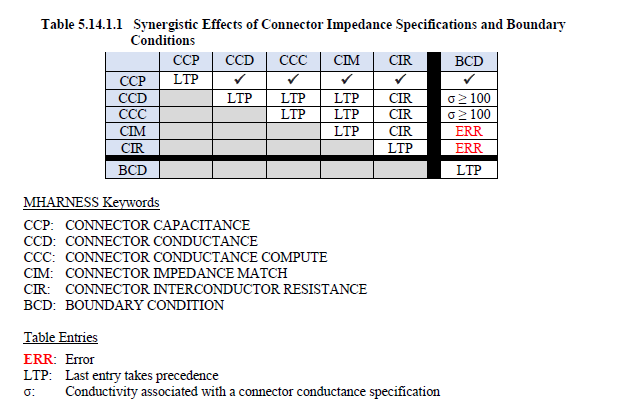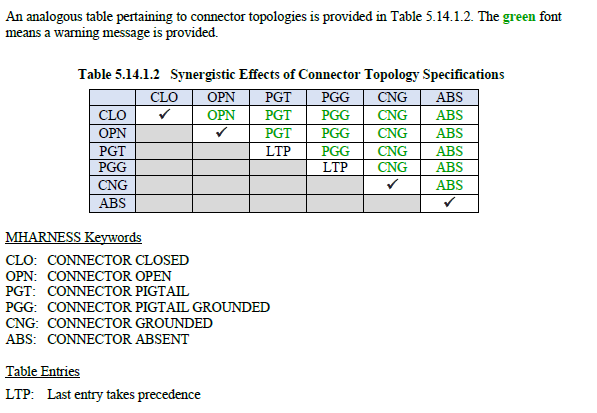Cable Physical Ending Terminations |
Cables with a physical ending are those that terminate to a material. Such terminations will involve connector impedances, boundary conditions, and various connector topologies. Connector topologies always supersede connector impedance definitions and possibly boundary condition specifications. The algorithms associated with connector topologies will modify any connector impedance information and boundary condition information to obtain the necessary configuration to enact the connector topology specification.
The entries in Table 5.14.1 for physical endings are divided into three sections. These sections are labeled, “Connector Impedance”, “Circuit Terminations”, and “Connector Topologies”. The hierarchy and synergistic effects associated with utilizing keywords of the first two sections is provided in the Table 5.14.1.1. The hierarchy and synergistic effects pertain to definitions at the same connector.

The most effective way to read this table is to start with the left-hand column containing the
MHARNESS® keywords. Taking one of these keywords, read across the table to observe the synergistic effects. For instance, selecting the “CCP” entry in the left-hand column and reading across reveals the following effects. The CCP means that a particular connector was provided with a CONNECTOR CAPACITANCE specification. Reading across, if another CCP was specified then the last entry takes precedence. Continuing the process, all other entries in the row are acceptable.If a connector was provided with a CCC specification along with a CIR definition, then the CIR would take precedence. If a BCD was provided for any connector with a CCD or CCC specification, then the associated conductivity must be greater than 100 Mhos/m. If a boundary condition was supplied for a connector with a CIR specification, then an error would result.

EMA3D - © 2025 EMA, Inc. Unauthorized use, distribution, or duplication is prohibited.